Jackson Hole Wildlife Ecotour Log January 2018
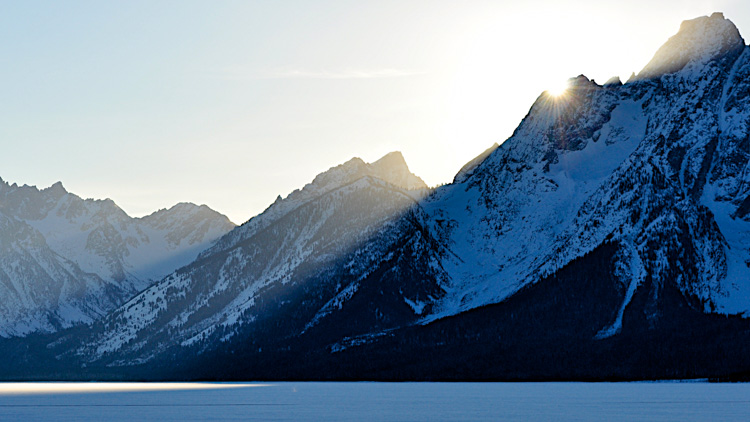

2018 is off to a fantastic start in Jackson Hole. The great mammal migrations of Wyoming have brought thousands of animals to the National Elk Refuge and Grand Teton National Park, where they will wait out the winter. Waterfowl are gathering on remaining open water as ice forms on the regions lakes. And predators, including golden and bald eagles, coyotes and wolves, are following these migrations, becoming more visible atop the snow.
January has provided a bounty of wildlife sightings on Ecotours with the guides at Jackson Hole Ecotour Adventures. We’ve explored track and sign of elk, moose, and great gray owls on our cross country ski and snowshoe tours in Jackson Hole and listened to the howls of the Lower Gros Ventre wolf pack in Grand Teton National Park.
Our most recent Yellowstone Multi Day tour revealed a winter wonderland of steaming geyser basins, frost covered bison, wolves, and diverse winter wildlife emblematic of the Greater Yellowstone Ecosystem. Read on to learn more about the highlights of our wildlife, snowshoe, and cross country ski safaris in Grand Teton and Yellowstone National Parks for the first month of 2018.
Winter is the Time to See Moose and other Large Mammals!
Though the Teton Mountain Range is seeing good accumulations of snow, warmer temperatures and low snowfall in the valley have created a unique opportunity to view wildlife in Grand Teton National Park this winter. We’ve continued to see large groups moose throughout the month of January. Most large bulls have shed their antlers by now but some of the younger bulls still carry theirs. We’ve been viewing quite a bit of sparring as you can see from the video below!
In contrast to this time last winter, some elk still remain in Grand Teton National Park, though numbers on the National Elk Refuge are quickly increasing to over 4000 animals at last count. The Refuge also provides critical habitat for Bighorn Sheep from the Gros Ventre Mountains to the East.
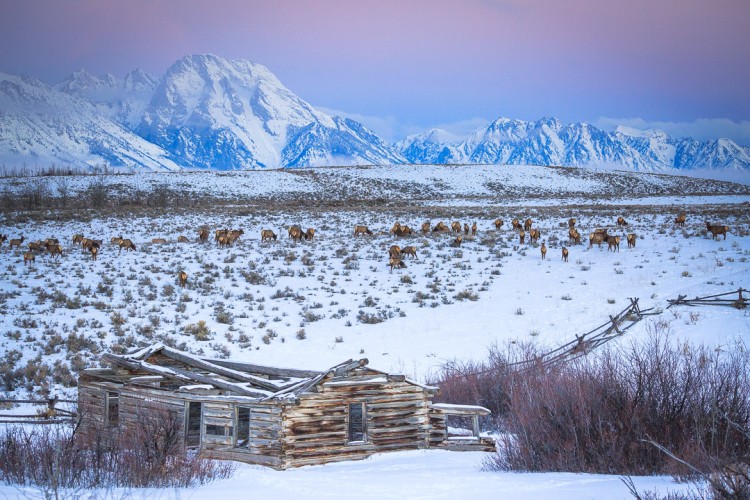
Ski and Snowshoe Trips through the Winter Wonderland
Low snowfall in the valley of Grand Teton National Park has also provided opportunities to study the track and sign left behind by animals like elk, deer, bison, and moose, who often migrate to lower elevation habitat in winter. We’ve also been observing tracks of winter residents like fox, coyote, american marten, ermine, and even great gray owl prints in the snow! Our cross country skiing and snowshoe Ecotours are designed for all ability levels from beginner to expert and are a great way to explore the winter wonderland of Grand Teton National Park with an experienced guide leading the way. Learn more about some of our favorite spots to explore here.
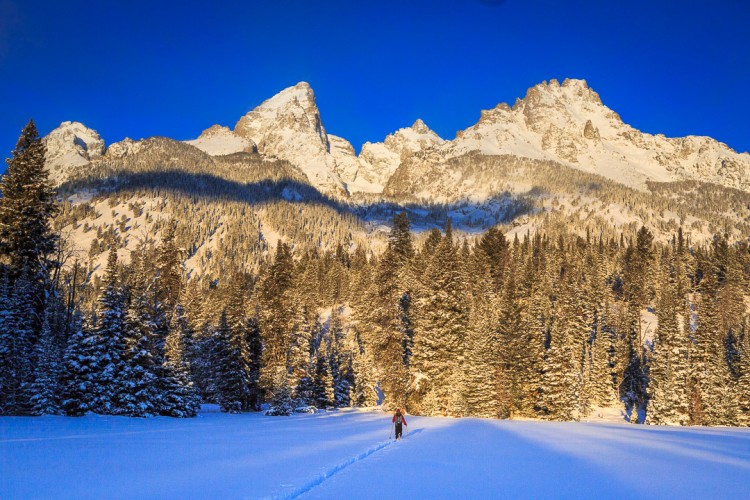
Feathered Sightings Abound in Winter
Though over 2/3rds of the bird species found in the Greater Yellowstone Ecosystem migrate to warmer locales in winter, the Jackson Hole Valley remains a birding hot spot. Some species, like bald and golden eagles become more visible in winter, as concentrated big game species provide scavenging opportunities. We observed 7 eagles on a carcass earlier this week! Rough-legged hawks, a close relative of red-tailed hawks, have been frequently observed this winter, having migrated several thousand miles south from their nesting territories above the arctic circle.
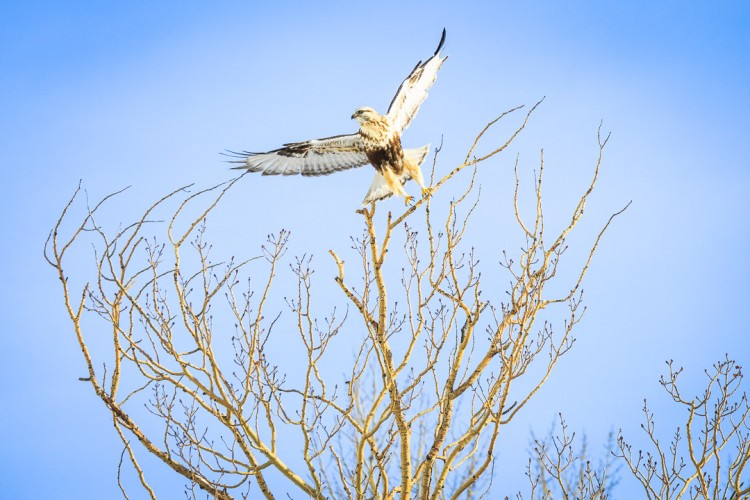
Though their numbers plummeted after last years harsh winter we have had a few Great Gray Owl sightings on tours this winter, and hope to see more of this “ghost of the forest,” the largest owl in North America. The largest waterfowl in the world, Trumpeter Swans, have been readily visible, enjoying the open water of Flat Creek just north of the town of Jackson. This has also been a good winter for observing northern pintail, bufflehead, goldeneye, gadwal, hooded mergansers and other waterfowl species.
Small Mammal Sightings!
Remaining open water in the Jackson Hole Valley is providing some spectacular opportunities for Otters, which must find holes in the ice to fish throughout the winter. A two layered coat keeps otters warm in winter and their long slender bodies are perfect for efficient swimming and sliding across the snow surface.
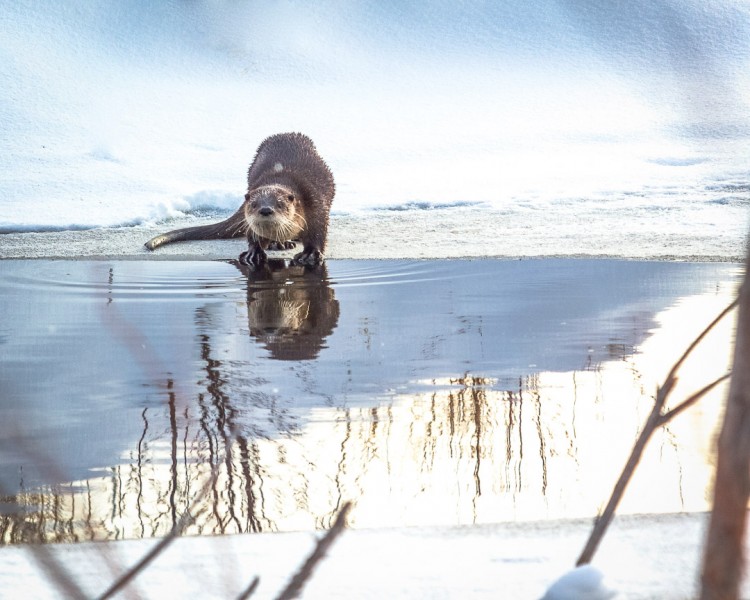
Otters belong to the mustelid, or weasel family and we recently observed a well camouflaged relative, an ermine! Like snowshoe hares, ermine will exchange their brown summer coat a white one in winter which aids in avoiding detection by predators. Ermine and other small weasels must constantly hunt in winter time, depending on heat generated from their metabolism to stay warm.
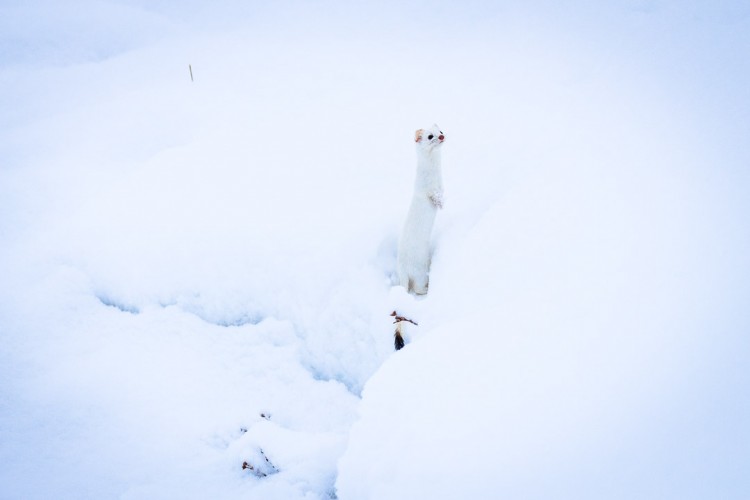
Bison: Perfectly Suited for Winter Survival
In contrast to the survival strategy of the small ermine, our largest animal found in the GYE, the American Bison, puts on the pounds and a thick coat to endure our long winters. With thick muscular shoulders, bison are capable of plowing through up to three feet of snow to reach grasses buried below. Their thick coats provide insulation well into sub zero temperatures.
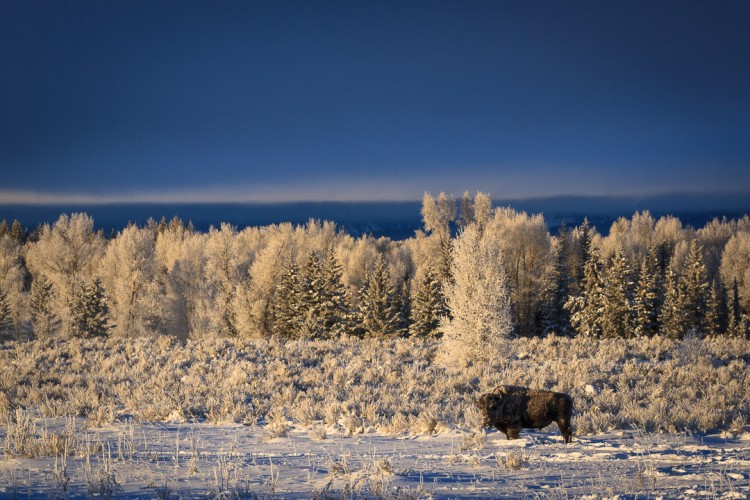
Frost covers a well insulated bull bison on a -20 degree January morning in Grand Teton National Park. Photo by Josh Metten
Winter of the Wolf
We’ve enjoyed spectacular wolf sightings in both Grand Teton and Yellowstone National Parks throughout the month of January. On our winter multi day tour wolves from the Wapiti Lake Pack were observed feeding on a bison kill two days in a row along the Madison River. Wolf kills provide an abundance of food to scavengers such as eagles, ravens, magpies, and coyotes, all of which we observed sharing the bounty. Though elk make up the majority of wolf diets, several packs have increasingly been targeting bison, a higher risk but also higher reward.
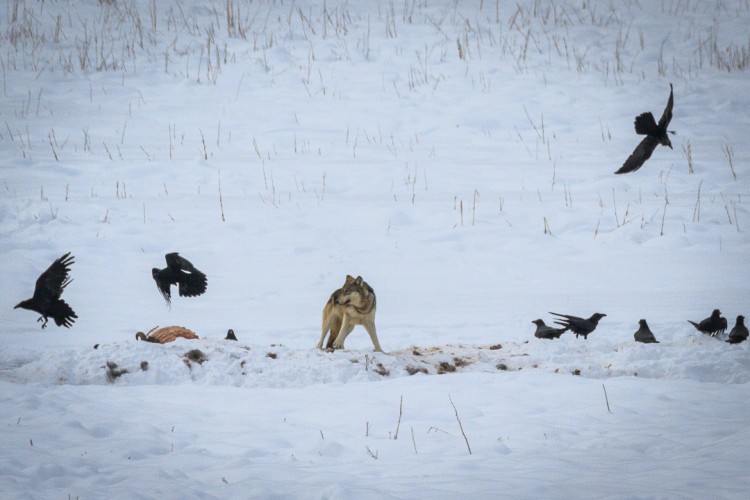
In Jackson Hole, wolves and coyotes have been frequenting Antelope Flats in Grand Teton National Park and we’ve also had observations on the National Elk Refuge. The mating season for wolves, coyotes, and foxes is fast approaching and we hope the packs continue to localize in a visible locations throughout this period of high activity.
Winter’s Battle for Life Continues
With the passage of the new year, days are beginning to grow longer, yet winter’s grasp remains strong in Grand Teton and Yellowstone National Parks. The experienced guides of Jackson Hole Ecotour Adventures are out every day exploring this wild country. Let us show you the best Jackson Hole has to offer, whether on one of our popular Wildlife Ecotours, or on the snow with a cross country ski or snowshoe trip. Click book now at the top of the website to see live availability for all of our trips and use code “Winter18” for 10 percent off when you book before March 31st 2018.













